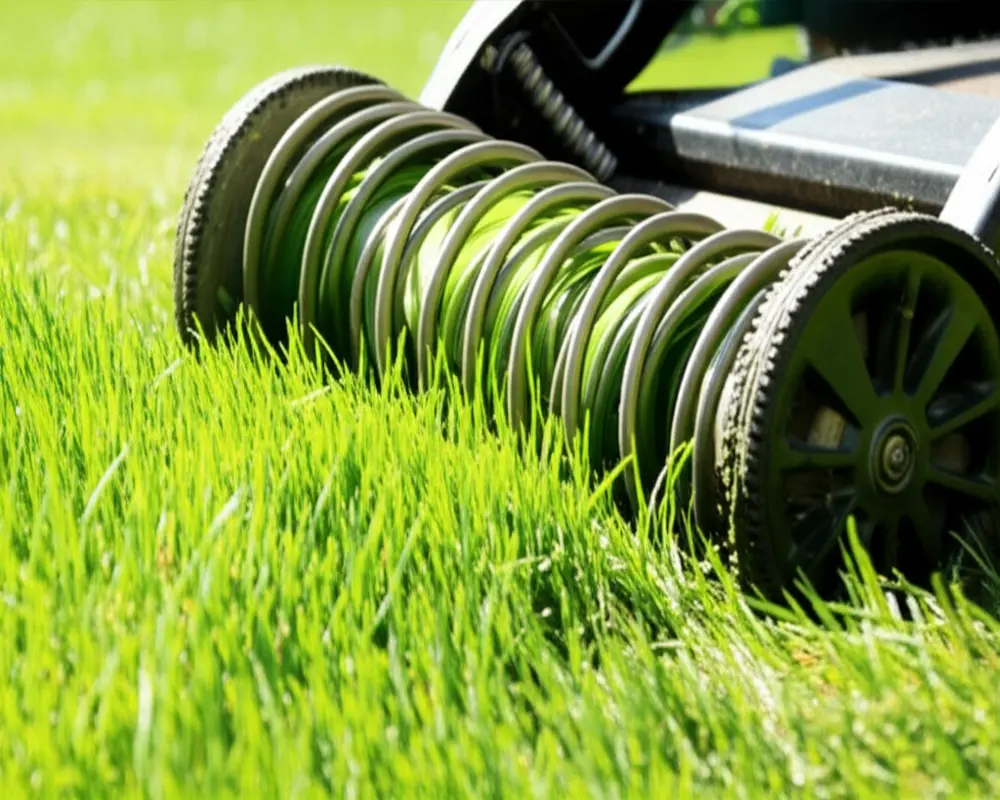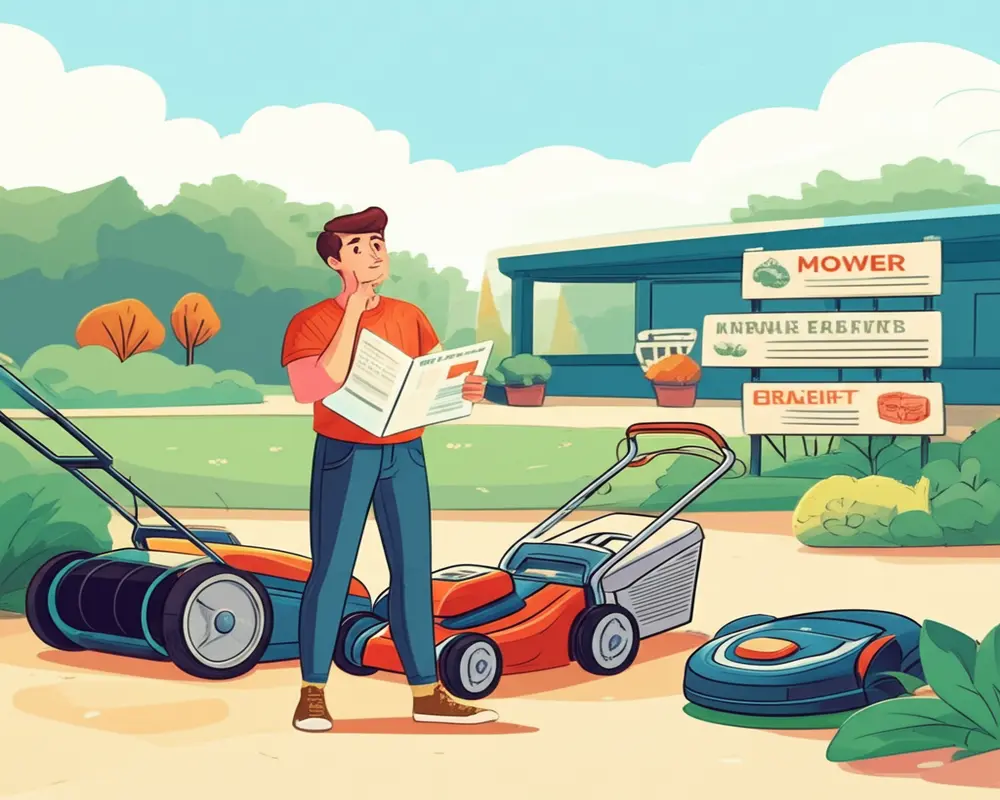First Time Lawn Mower Buying: A Beginner’s Definitive Guide 2025
Welcome to your first lawn mower buying journey. If you’re new to lawn care, the array of options can seem overwhelming. This guide is designed specifically for first-time buyers like you, aiming to simplify the decision-making process by providing clear, expert insights. Choosing the right lawn mower matters because it can make lawn maintenance easier, more efficient, and even enjoyable. The right mower depends on your unique needs, from lawn size and terrain to budget and personal preferences.
Thank you for reading this post, don't forget to subscribe!What This Guide Will Cover
We will explore the various types of lawn mowers available in 2025, outline essential features to consider, and help you evaluate your personal requirements through a self-assessment. You’ll also find practical tips on accessories, maintenance, and troubleshooting, all aimed at empowering you to make an informed and confident purchase.
Understanding Your Options: A Beginner’s Guide to Lawn Mower Types
Manual Reel Mowers
Manual reel mowers operate purely by pushing, using a set of rotating blades to cut grass in a scissor-like action. They are simple, environmentally friendly, and require no fuel or electricity.

Ideal for small, flat lawns, these mowers are quiet and low maintenance. However, they require physical effort and are less effective on thicker or uneven grass. They suit buyers looking for an eco-conscious, low-cost option with minimal upkeep.
Electric Lawn Mowers (Corded & Cordless/Battery-Powered)
Electric mowers come in two main types: corded and cordless. Corded electric mowers require a nearby power outlet and are limited by cord length, while cordless models run on rechargeable batteries, offering greater freedom of movement.

Electric mowers are quieter and cleaner than gas-powered models, with lower maintenance needs. For cordless models, battery voltage and runtime are critical factors to consider; higher voltage typically means more power but shorter battery life. They work well for small to medium lawns and buyers seeking convenience and environmental benefits.
Gas-Powered Lawn Mowers
Gas mowers remain a traditional choice for those needing power and durability. They come with various engine types, including 4-stroke and 2-stroke, with 4-stroke engines being more common due to better fuel efficiency and lower emissions.
These mowers excel on large or uneven terrain and thick grass but require regular maintenance such as oil changes, spark plug checks, and fuel management. They tend to be heavier and noisier but offer unmatched cutting power.
Robotic Lawn Mowers
Robotic mowers provide an autonomous mowing solution. After initial setup, they navigate your lawn independently, cutting grass regularly to maintain a neat appearance. They are ideal for tech-savvy users with moderate lawn sizes who value convenience and time savings.

While the upfront cost is higher and installation can be complex, robotic mowers reduce manual labor significantly. They often include smart features like app control and scheduling.
Riding Lawn Mowers
Riding mowers, including lawn tractors and zero-turn models, are designed for large properties where push or walk-behind mowers become impractical. They offer comfort and efficiency, with zero-turn models providing superior maneuverability.
These machines require a higher investment but drastically reduce mowing time. They come with powerful engines, large cutting decks, and various attachments for versatile yard maintenance.
Mower Type Comparison Table
| Mower Type | Pros | Cons | Ideal For |
|---|---|---|---|
| Manual Reel | Eco-friendly, low maintenance, quiet | Requires physical effort, limited to small lawns | Small, flat lawns; eco-conscious users |
| Electric (Corded & Cordless) | Quiet, low maintenance, no emissions | Corded limited by reach; cordless limited battery life | Small to medium lawns; convenience-focused buyers |
| Gas-Powered | Powerful, suitable for tough terrain | Requires maintenance, noisy, emissions | Large or uneven lawns; heavy-duty use |
| Robotic | Autonomous, time-saving, smart features | High cost, complex setup | Tech-savvy users; moderate lawn sizes |
| Riding | Comfortable, efficient for large lawns | Expensive, requires storage space | Large properties; users desiring efficiency |
The First-Time Buyer’s Self-Assessment: Matching Your Mower to Your Needs
Before you decide on a mower, take a moment to assess your lawn and personal circumstances carefully. This self-assessment ensures your choice aligns with your unique situation.
Lawn Size Guide and Estimation Tips
Measure your lawn’s size accurately, either by pacing it out or using online mapping tools. Lawn size influences mower type and deck width. For example, a small lawn under 1/4 acre (approximately 10,890 sq ft or 1,012 sq m) can be managed with a manual or electric mower, while larger lawns demand more powerful, wider-deck machines.
Terrain & Landscape Considerations
Analyze your lawn’s terrain. Flat, even lawns suit most mowers, but hilly or uneven lawns may require self-propelled or riding mowers for safety and ease. Obstacles like trees, flower beds, and slopes affect maneuverability and mower choice.
Physical Capabilities & Preferences
Consider your physical capacity and comfort preferences. Manual reel mowers demand physical effort, while self-propelled or robotic mowers reduce strain. Features like adjustable handles, ergonomic grips, and lightweight designs improve comfort.
Budget and Long-Term Ownership Costs
Set a realistic budget that includes initial purchase price plus ongoing expenses such as fuel, battery replacement, maintenance, and repairs. More affordable models may cost less upfront but incur higher maintenance costs. Conversely, premium mowers might offer better durability and user experience.
Key Features & Specifications Explained
Understanding mower features helps you evaluate models effectively. Here are critical specifications explained:
Deck Size & Material
The deck size, measured in inches or centimeters, determines the width of grass cut per pass. Larger decks (e.g., 21-22 inches or 53-56 cm) cover more area quickly but may be less maneuverable. Deck material, typically steel or plastic, affects durability and weight.
Power Source Deep Dive
Power sources include manual push, electric (corded or battery), gas engines, or hybrid systems. Each has trade-offs in power, noise, emissions, and maintenance.
Cutting Height Adjustments
Most mowers offer adjustable cutting heights, typically ranging from 1 to 4 inches (2.5 to 10 cm). Multiple settings allow customization for grass type and season.
Discharge Options – Bagging, Mulching, Side Discharge
Choose how clippings are managed: bagging collects cut grass for disposal or composting; mulching finely chops clippings to nourish the lawn; side discharge expels clippings away from the mower.
Drive System Types – Push, Self-Propelled
Push mowers require manual effort, while self-propelled mowers assist movement via a powered drive system, easing operation on slopes or larger lawns.
Starting Mechanisms
Starting can be manual pull, electric start, or key start. Electric or key starts provide ease, especially for gas mowers.
Wheels & Maneuverability
Larger wheels improve handling on rough or uneven ground. Swivel front wheels enhance turning radius and control.
Ergonomics & Comfort Features
Look for adjustable handles, padded grips, vibration reduction, and lightweight design to reduce fatigue.
Smart Features & Connectivity
Some modern mowers incorporate smart technology, such as app control, GPS tracking, and automated scheduling, primarily in robotic models.
Top Recommendations for First-Time Buyers
Depending on your lawn size, terrain, and budget, here are some tailored recommendations:
- Small, flat lawns: Manual reel or cordless electric mowers offer simplicity and quiet operation.
- Medium lawns with some obstacles: Self-propelled electric mowers provide ease and maneuverability.
- Large or uneven lawns: Gas-powered self-propelled or riding mowers deliver power and efficiency.
- Busy homeowners: Robotic mowers reduce manual effort and maintain consistent lawn care.
Beyond the Purchase: Essential First-Time Owner Tips
Once you bring your mower home, follow these steps to ensure a smooth experience:
- Unboxing: Check all components, read the manual, and assemble carefully.
- Safety: Wear protective gear, clear the lawn of debris, and keep children and pets away during operation.
- Maintenance: Regularly clean blades, check oil levels (for gas mowers), charge batteries, and inspect for wear.
- Storage: Store your mower in a dry, sheltered place. For gas mowers, drain fuel before seasonal storage.
- Troubleshooting: Common issues like failure to start can often be resolved by checking spark plugs, fuel, or battery charge. For detailed troubleshooting, visit our guide on lawn mower won’t start.
Understanding Value, Durability, and Warranty
A quality lawn mower can last several years with proper care. Warranties typically range from 1 to 3 years, covering defects but not wear and tear. When evaluating value, consider expected lifespan, repair costs, and availability of replacement parts. Sometimes repairing an older mower costs more than replacement.
Frequently Asked Questions (FAQs) for New Lawn Mower Owners
- What is the best mower for a small yard?
- Manual reel or cordless electric mowers are generally best for small yards due to their ease of use and quiet operation.
- How often should I mow my lawn?
- Typically, mowing once a week during the growing season is adequate, but this depends on grass growth rate and weather.
- Are electric mowers powerful enough for thick grass?
- Corded electric mowers handle regular grass well, but very thick or tall grass may require a gas mower or higher-voltage cordless model.
- Can I use a robotic mower on uneven terrain?
- Robotic mowers work best on relatively flat lawns; some models can handle slight slopes but not steep hills.
- How do I maintain my lawn mower blade?
- Keep blades sharp by periodic sharpening or replacement to ensure clean cuts and healthy grass.
Lawn Mower Glossary for Beginners
Deck: The cutting area of the mower, including the blades and housing.
Mulching: Cutting grass into fine clippings that fall back onto the lawn to fertilize it.
Self-propelled: A mower that moves forward with motor assistance, reducing the need to push.
Zero-turn: A riding mower with a turning radius of zero, allowing sharp turns.
Voltage: Battery power level in electric mowers, influencing power and runtime.
Conclusion: Mow with Confidence!
Choosing your first lawn mower may seem complex, but armed with the right knowledge, you can make a choice that suits your lawn size, terrain, and lifestyle. Consider your needs carefully, understand the features, and select a mower that offers reliability and ease of use. With proper care and maintenance, your new mower will serve you well for years to come. Ready to make your purchase? Explore our detailed buying guides and product reviews to find the best option for you.
Author Expertise & Methodology
This guide draws upon extensive research, hands-on testing, and analysis of current market offerings from trusted sources such as Consumer Reports and U.S. Environmental Protection Agency. Our commitment is to provide unbiased, practical advice grounded in real user experience to help you make the best decision for your lawn care needs.
For further insights on lawn care tools and techniques, visit our related articles such as Hand Cultivator Buying Guide and Digging Spade Technique.

